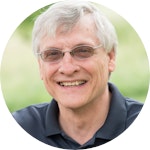John Chrysostom was the late fourth-century archbishop of Constantinople, present-day Istanbul, Turkey. He was thoroughly experienced in his practice of the discipline of imitation. Rather than installing Demosthenes or Homer in his soul, Chrysostom substituted Paul and Christ. During two years spent in solitude in a cave above Antioch, a “learning space” for immersion in Paul’s letters, Chrysostom memorized most, if not all, of the New Testament.
As Margaret Mitchell, a noted Chrysostom scholar observes, “Chrysostom inscribed on his brain a lot of Paul, and, at that, a lot of Paul speaking in the first person, now vocalized through [Chrysostom’s] own mouth. Not only did constant rereading and memorization of these texts serve to lay the foundation for a life of Scriptural exposition, but it also oriented Chrysostom’s own consciousness in a Pauline direction.”
During the years in the cave, Chrysostom developed key habit patterns he would later encourage his own congregation to develop. He writes: “The inexperienced reader when taking up a letter will consider it to be papyrus and ink; the experienced reader will both hear a voice, and converse with one, the one who is absent … The things their writings said, they manifested to all in their actions … You have a most excellent portrait [of the apostle Paul]. Proportion yourself to it.”
In Chrysostom’s thinking and practice, to proportion oneself to Paul — through the use of a highly developed memory soaked in the Scripture and through concrete imitation of key aspects of Paul’s life — is by definition to proportion one’s mind and life to Christ.
All of us probably have individual teachers and mentors whom we want to emulate. For many at Renovaré, Dallas Willard was just such a person. If they are still living, we want to spend time with them whenever possible; if they have died, we want to read their works and find out more about their lives.
In the case of Christ himself and of his apostles and prophets, one can hardly go wrong by entering into the Holy Scriptures, as Chrysostom did, with careful, gracious imitation always in mind. To imitate Christ is to regard his words and deeds as precious treasures, to contemplate them, memorize them, meditate upon them, to chew on them as a cow chews its cud. To imitate Paul is to ask how he conducted himself from day to day, and what were the practices that nourished and sustained his own life in Christ?
Now, this call to attend carefully to the biblical witness regarding Christ, Paul, Peter, Mary, Martha, and others is not merely in order to imitate; we are also attending to an instance of imitating, since both our Savior and his apostle were (like all good Jews) steeped in the Scriptures. If we are to follow them in the knowledge of God, our thinking, too, must be profoundly shaped by the steady, paced memorization of the Word of God. This need not, and should not, signal slavishly rote memorization, but creative practical application as well. The aim of memorization is not to pass some cosmic Bible quiz but to have our intellectual and imaginative consciousness shaped by God himself. We need not have a biblical phrase to toss into every conversation, but we do want to speak and to live in the world in the way that Scripture itself illustrates.
This sort of thoughtful, committed, creative imitation of the exemplary lives we see in Scripture (and elsewhere) prepares us for deeper entrance into the knowledge of God that such lives embody. Thinking and behavior, behavior and thinking, are all one piece, one whole. I’ll close with advice from Athanasius of Alexandria, bishop of Alexandria in the early fourth century:
“One cannot possibly understand the teaching of the saints unless one has a pure mind and is trying to imitate their life … Anyone who wants to look at sunlight naturally wipes his eye clear first, in order to make, at any rate, some approximation to the purity of that on which he looks …”
This series has been adapted from Steven D. Boyer and Chris Hall’s The Mystery of God: Theology for Knowing the Unknowable. Hungry for more? Please visit Baker Academic for more information.
Photo by mike anderson on Unsplash
Text First Published January 2017


